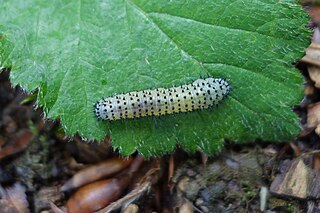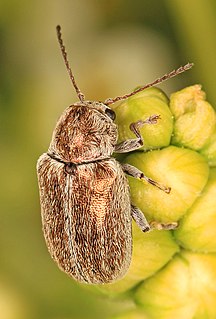
The Integrated Taxonomic Information System (ITIS) is an American partnership of federal agencies designed to provide consistent and reliable information on the taxonomy of biological species. ITIS was originally formed in 1996 as an interagency group within the US federal government, involving several US federal agencies, and has now become an international body, with Canadian and Mexican government agencies participating. The database draws from a large community of taxonomic experts. Primary content staff are housed at the Smithsonian National Museum of Natural History and IT services are provided by a US Geological Survey facility in Denver. The primary focus of ITIS is North American species, but many biological groups exist worldwide and ITIS collaborates with other agencies to increase its global coverage.

Fire-coloured beetles is the common name for members of the tenebrionoid family Pyrochroidae. The family is found worldwide, and is most diverse at temperate latitudes. Adults measure 2-20 mm; larvae reach 35 mm. Larvae of Pyrochroinae are found associated with the bark of dead trees. They are probably mostly fungivorous, although they may become cannibalistic if too crowded.

Heteroceridae, the variegated mud-loving beetles, are a widespread and relatively common family of beetles found on every continent except for Antarctica.

The Ochteridae comprise a small family of insects. Eight genera with about 80 species have been described. They occur worldwide along the shore of various types of water and the greatest diversity is in tropical regions. They are "true bugs", being members of the order Hemiptera, and are in the suborder Heteroptera. Ochteridae commonly are known as the velvety shore bugs. They resemble the Saldidae shore bugs and have lengths ranging from 4.5 to 9 mm (0.18–0.35 in).
The Catalogue of Life is an online database that provides an index of known species of animals, plants, fungi, and microorganisms. It was created in 2001 as a partnership between the global Species 2000 and the American Integrated Taxonomic Information System. The Catalogue is used by research scientists, citizen scientists, educators, and policy makers. The Catalogue is also used by the Biodiversity Heritage Library, the Barcode of Life Data System, Encyclopedia of Life, and the Global Biodiversity Information Facility. The Catalogue currently compiles data from 165 peer-reviewed taxonomic databases that are maintained by specialist institutions around the world. As of September 2022, the COL Checklist lists 2,067,951 of the world's 2.2m extant species known to taxonomists on the planet at present time.

Syneta is a genus of leaf beetles in the subfamily Synetinae. There are about 11 described species in Syneta. The genus is entirely holarctic in distribution, with species appearing in North America, Siberia, East Asia and Northern Europe.

Periclista is a genus of common sawflies in the family Tenthredinidae. There are at least 20 described species in Periclista.
Glyptoscelis juniperi is a species of leaf beetle. It is found in California in the United States.

Glyptoscelis is a genus of leaf beetles in the subfamily Eumolpinae. There are 38 species of Glyptoscelis described from North, Central and South America. There are also three species of Glyptoscelis known from the West Indies, though they are wrongly placed in the genus. In addition, a single species was described from Hunan, China in 2021.
Hebardacris is a genus of spur-throated grasshoppers in the family Acrididae. There are at least three described species in Hebardacris.
Epicauta albida is a species of blister beetle in the family Meloidae. It is found in Central America and North America.
Graphops comosa, known generally as the Monahans sandhill chrysomelid or long-haired graphops, is a species of leaf beetle. It is found in southeast New Mexico and the adjacent region of Texas.
Glyptoscelis albicans is a species of leaf beetle. It is found in the southeastern United States.
Glyptoscelis alternata is a species of leaf beetle. It is found in the western United States.
Hebardacris albida, the Mount Whitney grasshopper, is a species of spur-throated grasshopper in the family Acrididae. It is found in North America.
Glyptoscelis illustris is a species of leaf beetle. Its range spans from California to Oregon in the United States.
Glyptoscelis prosopis is a species of leaf beetle. Its range spans from southern Texas to Mexico and Central America. It was first described by the American entomologist Charles Frederic August Schaeffer in 1905.
Glyptoscelis pubescens, known generally as the hairy leaf beetle or pine chrysomelid, is a species of leaf beetle. It is found in eastern North America. It is a potential pest of pine trees.
Glyptoscelis cryptica is a species of leaf beetle. It is found in the central United States.
Glyptoscelis squamulata, the grape bud beetle, is a leaf beetle. The species was first described by George Robert Crotch in 1873. It is found in the western United States.






